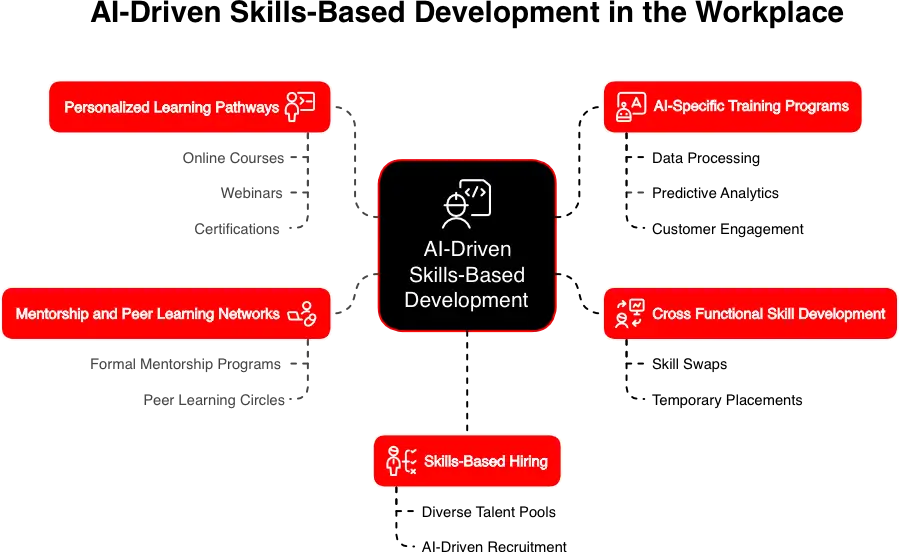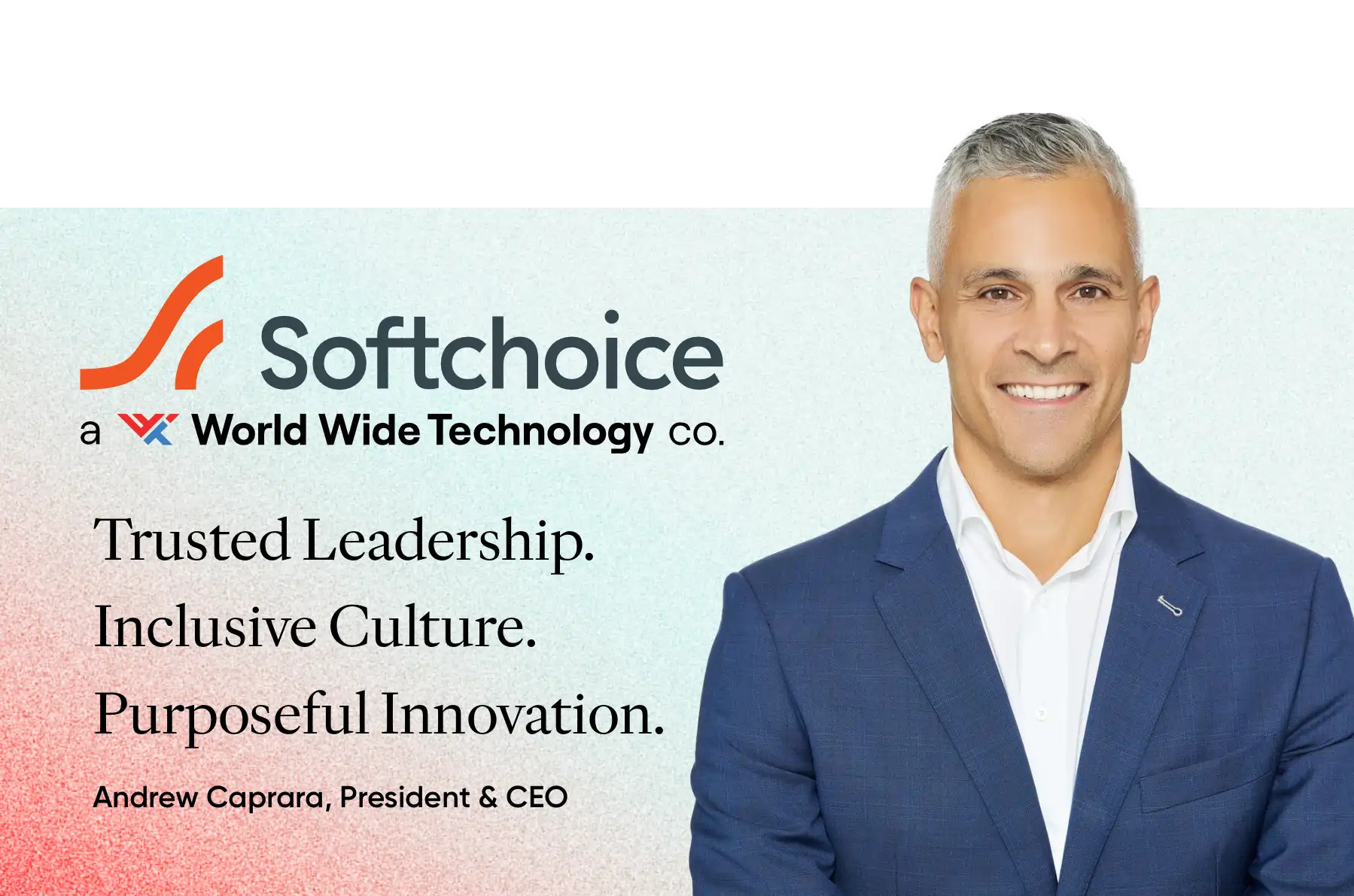
Key Takeaways:
- Shift from seniority to skill-based advancement – Rather than rewarding tenure, forward-thinking companies are prioritizing employees’ continuous skill development to boost engagement and retain top talent
- Staggering attrition drivers – 63% of employees cite no advancement opportunities as a primary reason for leaving, while 43% say lack of growth opportunities prompted them to quit their last job
- Best Workplaces Lead with Development – Among top employers for professional development, 92% say employees are offered professional training, and 91% agree people adapt quickly to needed changes
- Future-proofing growth relies on personalized learning, cross-functional skills, mentorship, AI training, and skills-based hiring.
- AI as a strategic lever for learning and equity – AI tools can personalize learning plans, match employees with mentors or new roles, train employees via simulations, and help reduce bias in hiring by focusing on skill fit
Today’s workplace is evolving rapidly. And that means employees’ skills need to continuously evolve as well. This skills-based development approach puts employee training and development programs at the forefront of both organizational success and employee satisfaction, because when you prioritize professional development, employees recognize you are invested in their long-term success and they in turn will work harder, stay longer, and bring their best selves to work every day.
Indeed, research shows that 63% of employees cite no opportunities for advancement as a top reason for leaving a job. And a recent Great Place To Work® LinkedIn poll revealed that 43% of people called out a lack of growth opportunities as the top reason they quit their last job.
Career growth in modern workplaces looks much different than it did even a decade ago. As organizations increasingly rely on artificial intelligence (AI) tools and automation to stay competitive, career progression based on years of service is no longer a given. Nor is moving up the career ladder. Instead, continuously learning new skills and empowering people to grow and challenge themselves can provide the career satisfaction that keeps people invested in their jobs and their success.

The best employers will facilitate this transition by prioritizing skills-based development; using upskilling and reskilling to empower employees, boost engagement, and future-proof their workforce. The Best Workplaces™ for Professional Development are at the forefront of this change, setting the pace for continuous learning and adaptability with 92% of their people agreeing they are offered training or development to further themselves professionally and 91% agreeing people quickly adapt to changes needed for organizational success. Here are some of the skills-based development practices they are using:
1. Personalized Learning Pathways
Leading companies are designing personalized employee development plans that align with employees’ career goals and organizational need. These plans often include access to online courses, webinars and certifications tailored to specific skill gaps. Employees are encouraged to pursue skills relevant to their current roles and those identified on their career path.
AI Opportunity: Use an AI learning platform to turn a library of online webinars and training modules into a personalized learning plan that maps employee career paths, sets goals, identifies skill gaps, and recommends specific courses and timelines.
2. Cross Functional Skill Development
To support career advancement as well as non-linear career progression, the best companies are encouraging employees to gain skills and find opportunities within their organization. Through skill swaps and temporary placements, employees can upskill on-the-job and prepare themselves for new and more multifaceted roles that AI will inevitably introduce.
AI Opportunity: Use AI to build an internal talent marketplace. Use this tool to suggest open positions that align with employees’ career goals, track employees’ skills and match them with upcoming projects, and even increase equity of opportunity by removing some of the bias involved in choosing who gets what opportunities.
Get Certified™
Great Place To Work® Certification can tip the scales in your favour and help you retain top candidates.
3. Mentorship and Peer Learning Networks
Formal mentorship programs and peer-to-peer learning networks are powerful tools for skills-based development. They provide employees with guidance, feedback, and real-world insights, which fosters a culture of continuous improvement. Peer learning circles are another great way to share expertise and can be used to develop AI related skills using practical applications from across the organization.
AI Opportunity: Use the power of AI to effortlessly match employees with a mentor who is best suited for their career goals. These tools can be used to facilitate effective reverse mentoring opportunities as well and take much of the guess-work out of creating a great match.
4. AI-Specific Training Programs
As AI reshapes job functions, companies are investing in targeted training to help workers leverage AI tools effectively. This includes teaching employees to use AI for tasks like data processing, predictive analytics, or customer engagement, as well as understanding ethical AI practices. To make the learning more engaging, employers are also using short, focussed certifications to validate specific skills.
AI Opportunity: Let AI be the trainer. For instance, AI Chatbots are being used by sales teams to practice their pitch or hone their sales skills. Customer service employees use AI to practice various interactions and simulate difficult conversations to practice their de-escalation techniques.
5. Skills-Based Hiring
To round out a skills-based development strategy, start prioritizing candidates’ abilities and potential over traditional credentials or years of experience in all of your recruitment and hiring practices. Focusing on what candidates can do rather than their tenure or degrees allows employers to tap into diverse talent pools, including people who have made career changes, self-taught individuals, and those from underrepresented groups.
AI Opportunity: Use an AI tool to streamline hiring. Upload job descriptions and candidate profiles and let AI rank candidates based on the skill fit parameters you set, or use AI to conduct interviews or real-life job simulations. You can even use AI’s predictive analytics to assess candidates’ potential and compare them to current high performing employees.
With the rapid advancement of AI and technology, it’s time to rethink the workplace and put skills first. This makes continuous upskilling and skills-based development more critical than ever and introduces a significant change to traditional notions of career advancement based on seniority. And while this change can be daunting, it heralds an opportunity to create deeper and more meaningful connections to work when employers support their people along their upskilling journey.
Ultimately, career growth in the modern workplace presents exciting opportunities, and the Best Workplaces™ for Professional Development are embracing and leveraging AI to thrive in an AI-driven world.
Check out the complete list of 2025 Best Workplaces™ for Professional Development List.
Get Certified
Want to know how your people feel about your workplace culture during times of change? Get Certified today and learn the answer to this question and gain many more insights along the way.
Frequently Asked Questions:
1. How can organizations create effective personalized learning pathways that align with both employee goals and business needs?
Often involves assessing skill gaps, offering tailored course recommendations, and setting developmental milestones linked to career trajectories.
2. What does cross-functional skill development look like in practice?
Practices can include internal skill swaps, rotational assignments, or project-based placements to broaden employees’ experience.
3. How can AI be leveraged effectively for mentorship and peer learning?
AI systems can match mentees with mentors based on goals, skills, and compatibility, enhancing reverse mentoring and reducing admin friction.
4. What are examples of AI-specific training methods that deliver real impact?
For instance, chatbots for sales pitch practice, simulated customer service interactions to hone de-escalation skills, or short certifications focused on AI ethics and analytics.
5. How do you implement skills-based hiring without compromising on quality or fit?
By defining role-relevant skills clearly, using AI-driven assessments or simulation tasks, and expanding candidate pools to include non-traditional or self-taught talent.






